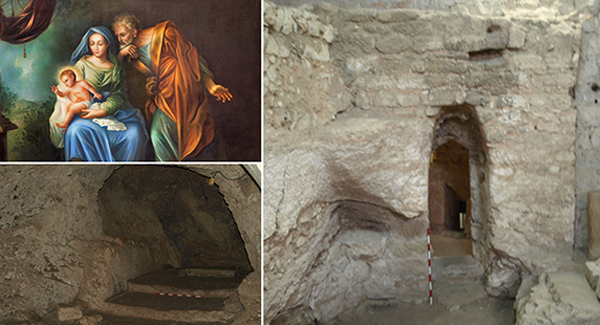A British archeologist claims to have excavated the childhood home of Jesus Christ under an Israeli monastery.
Ken Dark, a professor of archeology and history at the Reading University, says he has a strong case after 14 years of fieldwork in Nazareth.
According to The Times, Prof. Dark believes that some researchers dismissed the identification of ruins beneath the Sisters of Nazareth Convent as the home of Jesus’ foster father Joseph too fast.
Expert claims his study has confirmed that the monastery was built on top of a first-century house believed to be the house of Jesus.
He believed Jesus grew up with Mary and Joseph here from the 380s until the claim was rejected in the 1930s.
Since the home was built into a limestone hillside and contained parts of a natural cave, many features have survived.
Prof. Dark began his study at the site in 2006, describing it as “nearly forgotten” by historians. In 2015, he published a paper based on his first discoveries, claiming that the site was Jesus’ childhood home.
New research has now dated the location back to the first century, supporting his claims.
He says that the style of the house suggests it belonged to Joseph in his book The Sisters of Nazareth convent: A Roman-period, Byzantine, and Crusader site in central Nazareth. Joseph is commonly referred to as a carpenter, but he is described as a tekton in the original Greek texts.

He could also be a bricklayer or a builder who lived in a two-story house carved into the rock.
Prof. Dark also discovered pottery fragments that Jewish families usually used at that time. His fieldwork also revealed a cave church built right next to the house in the 4th century.
And it was around this time Emperor Constantine declared Christianity to be the Roman Empire’s official religion.
Further research uncovered a 5th-century church built on top of the house and the cave church. It was an intricately decorated cathedral with marble and mosaics, and it would have been the most remarkable church in Nazareth.
This hypothesis matches a 7th-century description of a large Byzantine church that was said to stand on the house of Jesus.
Professor Dark explains the church was even much larger than the nearby Church of the Annunciation, which shows the potential significance of the cave house. It’s said that the Archangel Gabriel visited Mary in the Church of the Annunciation and informed her that she would give birth to the Son of God.
He admits that there is no concrete evidence that the house was where Jesus lived, but he says there is no convincing evidence that any archeological site explicitly mentions this.
He argues that there is no reason that the location of Jesus’s home was not transmitted from the 1st to the 4th centuries. Based on “oral tradition,” the expert said, this explains the church’s architecture and the cathedral that followed it.
“Exhibiting a house in this way was truly unusual and important.”, Prof Dark told MailOnline.
How did the church builders know that these houses were of the first century if there were no traditions preserved there? There are also problems.
Finding historical evidence of the life of Jesus Christ is one of the longest-running pursuits in archeology, as there is no definitive evidence that he ever existed.






















